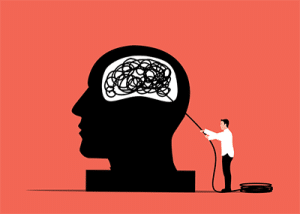When someone close to you is struggling with conversion disorder, it can be challenging to know how to help someone with conversion disorder. This blog post aims to provide you with an action plan to support your loved one on their journey to recovery. By understanding the nature of conversion disorder and its symptoms, recognizing the signs, and facilitating emotional support and coping strategies, you can play a crucial role in promoting recovery and preventing relapse.
Understanding Conversion Disorder

We’ll delve into the relationship between mental disorders and physical symptoms, while shedding light on how conversion disorder is classified in the Diagnostic and Statistical Manual (DSM).
Mental disorders and their impact
Individuals with conversion disorder often experience depression and anxiety, which can exacerbate their physical symptoms. These mental health issues are commonly associated with conversion disorder, and recognizing their impact is crucial for providing the necessary support.
The heightened risk of attempting suicide among people with conversion disorder is a clear indication of the severity of the condition. Gaining insights into the challenges encountered by those suffering from conversion disorder enhances our ability to support their recovery journey.
Physical symptoms without medical explanation
The physical symptoms of conversion disorder can include:
- Paralysis
- Numbness
- Blindness
- Deafness
- Seizures
These symptoms can be severely disruptive to daily life and are more pronounced than those experienced by individuals whose physical changes are related to their mental state, such as a rapid heart rate when feeling anxious. Emotional stress is often a contributing factor to the onset of symptoms or their exacerbation. Recognizing these physical symptoms and seeking a physical exam becomes vital to rule out other medical conditions and confirm appropriate treatment.
Diagnostic and Statistical Manual Classification
The Diagnostic and Statistical Manual (DSM) is a classification system for mental disorders developed by the American Psychiatric Association. Conversion disorder is classified as a somatic symptom disorder in the DSM-5, which means that the physical symptoms experienced are not consistent with any recognized neurological or medical conditions. This classification highlights the importance of psychological factors in the development and maintenance of conversion disorder and helps healthcare professionals in diagnosing and treating the condition.
Recognizing Symptoms of Conversion Disorder
Recognizing the symptoms of conversion disorder is a crucial step in providing support to those affected. The sudden onset of symptoms and their debilitating nature can make daily life challenging and distressing for individuals with conversion disorder.
Identifying these symptoms and distinguishing them from other mental health conditions allows us to guarantee the provision of appropriate treatment and support.
Sudden onset and debilitating episodes
The sudden onset of conversion disorder refers to the abrupt presentation of physical symptoms that affect voluntary motor or sensory function, such as paralysis, blindness, or numbness. These symptoms can be severely disabling and can impede regular activities such as work, school, and social engagements.
Treatment options for conversion disorder include physical and occupational therapy, counseling, and psychological interventions to address the underlying psychological cause and provide emotional support.
Recurrence and comorbid psychiatric disorders
While many patients with conversion disorder may experience short-term resolution of symptoms, it is not uncommon for up to 25% of them to relapse within one year or experience new symptoms in the future.
Depression, anxiety, post-traumatic stress disorder, and personality disorders are all comorbid psychiatric disorders associated with conversion disorder. Addressing these co-occurring mental health issues is essential for ensuring a more favorable outcome for the individual.
Differentiating from other mental health conditions
Conversion disorder can be distinguished from other mental health conditions by:
- its incompatibility with established neurological or medical conditions
- the psychological factors that are the source of the disorder
- the absence of any fundamental neurologic pathology.
Understanding these differences enhances our ability to support individuals with conversion disorder and guarantees they receive suitable care and treatment.
Supporting the Diagnostic Process
Diagnosing conversion disorder can be a complex process, as there is no definitive test for the condition. Supporting the diagnostic process involves understanding the role of mental health professionals, American Psychiatric Association guidelines, and neurological examinations in reaching a diagnosis.
Staying informed about these aspects enables us to offer valuable support and guidance to those affected by conversion disorder.
Role of the mental health professional
The role of mental health professionals, particularly psychiatrists, is paramount in diagnosing conversion disorder. Collaboration between neurologists and psychiatrists is recommended for accurate diagnosis and treatment planning, as it provides a more comprehensive understanding of the patient’s condition and the most suitable course of treatment.
Acknowledging the critical role of mental health professionals in the diagnostic process ensures that individuals with conversion disorder receive the necessary care.
American Psychiatric Association guidelines
The American Psychiatric Association guidelines for diagnosing conversion disorder can be found in the Diagnostic and Statistical Manual of Mental Disorders (DSM-5). The DSM-5 outlines the diagnostic criteria for conversion disorder, which includes one or more symptoms of altered voluntary motor or sensory function that are not consistent with recognized neurological or medical conditions.
Being aware of these guidelines enables us to support the diagnostic process and ensure individuals with conversion disorder are receiving suitable care.
Neurological examinations and diagnostic criteria
In order to accurately diagnose conversion disorder, tests are often conducted to rule out other potential causes of symptoms. The first step in diagnosing a condition is usually to evaluate any present symptoms. After that, it’s essential to exclude any neurological or medical conditions that could be causing the symptoms..
Comprehending the role of neurological examinations and diagnostic criteria in diagnosing conversion disorder strengthens our ability to support our loved ones throughout their recovery journey.
Encouraging Treatment for Conversion Disorder
Once a diagnosis of conversion disorder has been made, it is essential to encourage treatment and support. This includes promoting physical and occupational therapy, counseling, and addressing co-existing mental health problems.
Proactively seeking treatment and providing emotional support enables us to assist our loved ones in overcoming the challenges of conversion disorder and regaining control of their lives.
Physical and occupational therapy
Incorporating physical or occupational therapy into the treatment plan for conversion disorder can be instrumental in addressing physical symptoms. Physical therapy focuses on improving mobility and promoting physical function, while occupational therapy assists individuals in managing stress and enhancing their mood.
Combining these therapies with psychotherapy allows for a comprehensive treatment plan that addresses both the physical and psychological aspects of conversion disorder.
Counseling and psychological interventions
Cognitive behavioral therapy (CBT) and other psychological interventions can play a crucial role in treating conversion disorder by helping to identify and address the underlying psychological cause, as well as providing emotional support and coping strategies.
Through counseling, individuals can gain greater insight into their condition and develop effective coping strategies to manage their symptoms and prevent relapse.
Addressing co-existing mental health problems
It is essential to recognize and tackle any co-existing mental health issues to ensure the most favorable outcome for the individual with conversion disorder. This may involve medication, psychotherapy, or other forms of treatment to address conditions such as depression, anxiety, or post-traumatic stress disorder.
Tackling these underlying mental health problems aids our loved ones in achieving a more comprehensive recovery and reduces the risk of relapse.
Facilitating Emotional Support and Coping Strategies

- Active listening
- Empathy
- Teaching stress-relief techniques
- Navigating family dynamics and social situations
These strategies can all play a vital role in helping our loved ones manage their symptoms and prevent relapse.
Offering support and understanding builds a strong foundation for recovery.
Active listening and empathy
Active listening and empathy are essential in providing emotional support for those with conversion disorder. Techniques such as:
- Engaged curiosity
- Reflecting
- Acknowledging
- Summarizing
- Empathizing
- Asking questions
- Practicing mindfulness
can help us understand our loved ones’ experiences and provide comfort during challenging times.
Being present and attentive allows us to provide the necessary support and understanding for recovery.
Stress-relief techniques and self-care
Stress-relief techniques and self-care are crucial for managing conversion disorder symptoms and avoiding relapse. Some activities that can help individuals cope with stress and maintain a sense of balance in their lives include:
- Psychotherapy
- Relaxation exercises
- Cognitive-behavioral therapy
- Resilience-building
These techniques can be effective in managing conversion disorder symptoms and promoting overall well-being.
Motivating our loved ones to participate in self-care activities significantly contributes to promoting recovery and preventing relapse.
Navigating family dynamics and social situations
Conversion disorder can be linked to stressful family situations and disrupted social relationships. Addressing these underlying dynamics through family therapy, individual counseling, and other interventions can help provide support for the patient and improve their overall well-being.
In social situations, offering emotional support and coping strategies can help the patient manage their symptoms and maintain a sense of control over their lives.
Preventing Relapse and Promoting Recovery

Identifying and addressing triggers
Identifying triggers is a crucial step in preventing relapse for those with conversion disorder. By analyzing behavior and physical symptoms for patterns, we can determine which triggers may be causing the physical symptoms and address them accordingly.
Techniques for addressing triggers and preventing relapse may include assisting individuals in recognizing and managing their triggers, as well as providing coping strategies such as relaxation techniques and emotional support.
Importance of a balanced lifestyle
Having a balanced lifestyle is essential for managing conversion disorder and preventing relapse. Strategies for achieving a balanced lifestyle include:
- Getting adequate sleep
- Consuming a nutritious diet
- Engaging in regular physical activity
- Participating in activities that bring pleasure and serenity
Maintaining a balanced lifestyle enables individuals with conversion disorder to enhance their physical and mental health, and attain a sense of control and stability in their lives.
Ongoing Therapy and Support Groups
Ongoing therapy and support groups can play a vital role in promoting recovery and preventing relapse for those with conversion disorder. Different types of therapy, such as cognitive-behavioral therapy, psychotherapy, and family therapy, can provide valuable insight and support during the recovery process.
Support groups offer a safe environment for individuals to:
- Share their experiences
- Gain insight from others who are dealing with similar challenges
- Create a sense of belonging
- Reduce feelings of isolation
So, if you or someone you love is struggling with conversion disorder, it is important to seek out ongoing therapy and support groups as a part of recovery. Doing so can help you or your loved one gain the skills, resources, and guidance needed to manage their symptoms, strive for wellness, and regain control of their life. We understand that finding the right therapist or support group can be overwhelming. That’s why we offer free resources to help you find the perfect mental health professional or support group for your unique situation. We are here to support you every step of the way and wish you all the best in your journey towards healing.
Frequently Asked Questions
How to deal with someone who has conversion disorder?
When dealing with someone who has conversion disorder, supportive psychotherapy should be used to help cope with underlying conflicts and stress. Additionally, hypnosis and relaxation exercises may also be beneficial.
How do people with conversion disorder feel?
People with conversion disorder experience physical symptoms, such as paralysis, numbness, blindness, deafness or seizures, which are not due to any underlying neurologic pathology. These disruptive symptoms can significantly impact the patient’s ability to function and cause real psychological distress.
What are the 4 types of conversion disorder?
Conversion disorder is categorized into four types: motor symptoms, sensory deficits, pseudo-seizures, and a mixed presentation. Hysteria is also known to encompass wider symptoms than the newly minted somatoform category.
Is conversion disorder considered a disability?
Conversion disorder can be disabling, and those who suffer from its severe effects may be eligible for Social Security Disability Insurance.
What is the treatment for conversion disorder drugs?
The main treatment for conversion disorder is psychotherapy, such as cognitive-behavioral therapy (CBT), while medications like tricyclic antidepressants, haloperidol, and electroconvulsive therapy (ECT) may also be used to treat coexisting psychological or psychiatric conditions.




